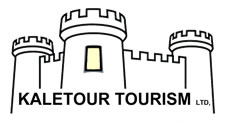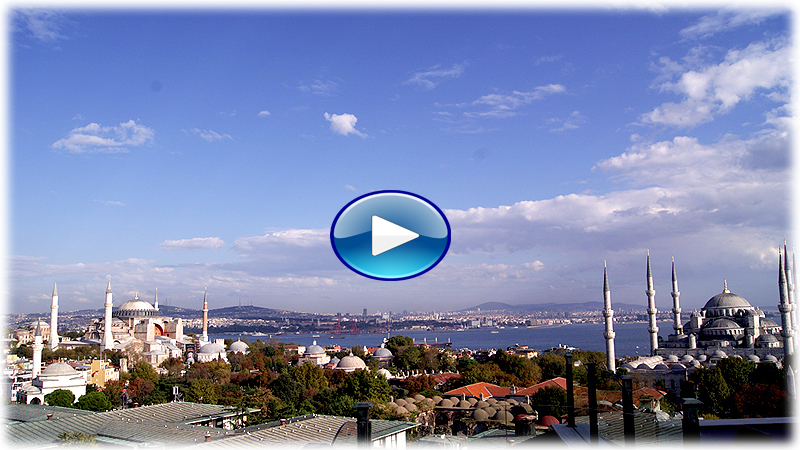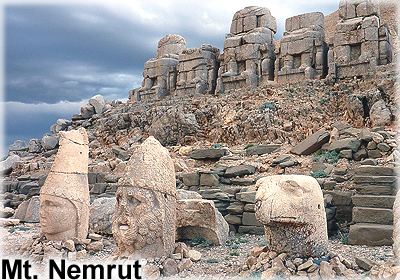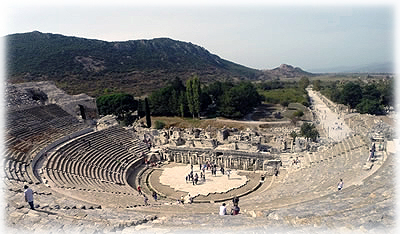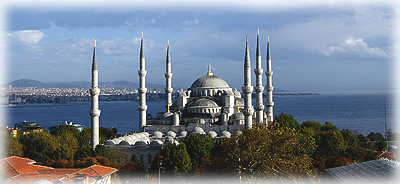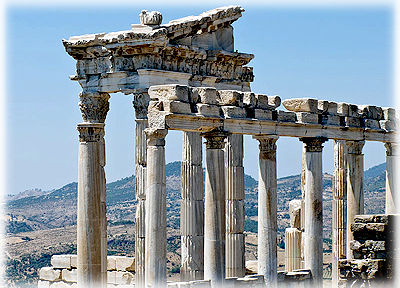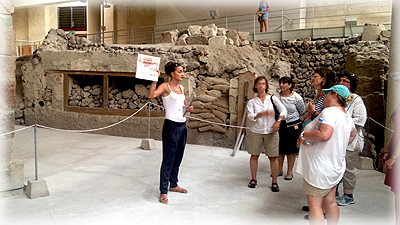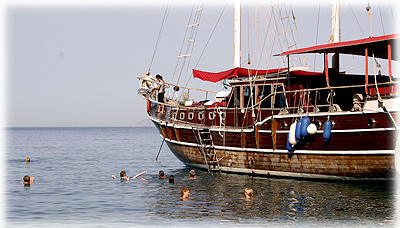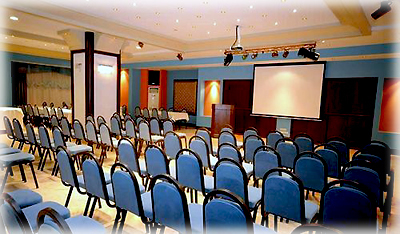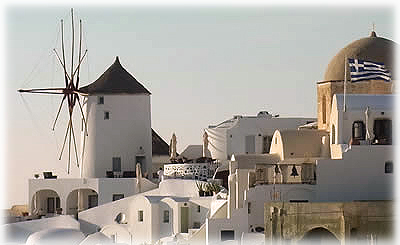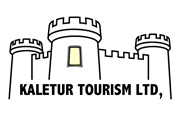Daily tour program
- Monday - Day 1 - Istanbul to Adiyaman - Mt. Nemrut - (D)
You'll be met at your Istanbul hotel and transferred to the airport for your 1.5 hour domestic flight to Adiyaman
Upon arrival you will be met and transferred to your hotel. After check in you will enjoy rest of the day at leisure.
overnight in Adiyaman.
- Tuesday - Day 2 - Mt. Nemrut to Urfa - (B/D)
Very early in the morning we will start our day with a short drive to the entrance, get off our minibus and go on a 30 minute
hike to the summit of MT Nemrut.
We will then enjoy sunrise between the colossal size statues and heads of the kings and Gods, excellent opportunity for photos.
We will then continue visiting Arsemia which was once the capital of the Commagene Kingdom.
We will see then ancient Septimus Severus Bridge bridge over the Cendere stream, and the Karakus tumulus where members of the royal family were buried.
After some free time, we will depart from Nemrut and drive to Urfa, on the way we will stop and visit the Ataturk Dam.
Upon arrival we will Gobekli Tepe, Abraham's Cave and the Pools of Holy Car, Harran a village of Mud-Brick "beehive" houses
We will spend rest of the day at leisure.
Overnight in Urfa.
- Wednesday - Day 3 - Urfa to Mardin - (B/D)
After breakfast, depart from Urfa on drive to Mardin, upon arrival we will check into our hotel and then we will enjoy rest of the day e
exploring and enjoying this beautiful, history and culture rich city of Mardin.
Mardin is known for its Arabic-like architecture, and for its strategic location on a rocky mountain overlooking the plains of northern Syria. Most Syriac Orthodox churches and monasteries in the city were built on ancient Assyrian-Babylonian temple
sites and some are still active today. The Syriac Orthodox Saffron Monastery was founded in 439 AD, is one of the oldest
functioning monasteries in the world.
Overnight in Mardin.
- Thursday - Day 4 - Mardin to Tatvan - (B/D)
Morning departure from Mardin and scenic drive to Tatvan, on the way we will visit Midyat and Hasan Keyf
Midyat : The history of Midyat can be traced back to the Hurrians during the 3rd millennium. Ninth century BC. Assyrian
tablets refer to Midyat as Matiate, or city of caves due to the caves at about 3 km away from the city where the earliest
inhabitants lived. Many different empires had ruled over Midyat including the Mitannians, Assyrians, Urartians, Medes, Persia, Greeks, Romans, Byzantines, Abbasids, Seljuks and Ottomans.
Hasan Keyf:
Hasankeyf is an ancient city, and has been identified with the Ilanṣura of the Mari Tablet (c. 1800 BC).
The Romans had built the Cephe fortress on the site and the city became the Kiphas fortress and a bishopric under the
Byzantine Empire.
It was conquered by the Arabs, in ca. 640, renamed Hisn Kayf. In the 12th century, the city was successively captured by the
Artukids as their capital. During this period, Hasankeyf's golden age, the Artukids and Ayyubids built the Old Tigris Bridge, the
Small Palace and the Great Palace. The infrastructure, location and significance of the city helped increase trade and made Hasankeyf a staging post on the Silk Road.
Arrival in Tatvan, check into our hotel, Overnight stay.
- Friday - Day 5 - Tatvan to Van - (B/D)
In the morning depart from Tatvan on a scenic 4 hour ferry ride to Van, upon arrival we will explore historical sites of Van.
* Hosap Castle, situated on a craggy outcropping along many of the area's silk routes, was built in the 17th century. The castle is impressive in both its size and the view it affords.
* Akdamar Island is the island's main attraction. Other than its stunning location within Lake Van, it is the home to the 10th-century Armenian cathedral, the Church of the Holy Cross. It was built by Bishop Manuel during the King Gagik I, in 915-921 AD. The reddish volcanic stone of the church set against the backdrop of Lake Van'a vividly-blue waters makes for an instant and unforgettable
impression. After visiting these sites we will return to our hotel.
Overnight stay in Van.
- Saturday - Day 6 : Van to Dogubeyazit - Kars - (B/D)
After breakfast, we will depart Van and drive along the Iranian border to Dogubeyazit; we will also visit Muradiye Falls, take in the
spectacular views of Mount Ararat, and visit Ishak Pasha Palace.
Sites you will visit:
* Mount Ararat: in Judeo-Christian tradition it is synonymous with the "Mountains of Ararat" where, according to the book of Genesis, Noah's Ark came to rest. The documented history of Mount Ararat is indeed long, beginning in the the 4th century with Jerome's reading of Josephus.
* Ishak Pasha Palace is an Ottoman-period palace whose construction began in 1685 by Colak Abdi Pasha, the bey of Beyazit province. According to the inscription on its door, the Harem section of the palace was completed by his grandson Ishak (Isaac) Pasha in 1784. The Palace is more of a complex than a palace; it was the second-most important administrative campus after Topkapi Palace in Istanbul.
The palace, built on the side of a mountain 5 km (3 mi.) east of Dogubeyazit, is a rare and magnificent example of the architectural style from the 18th-century Ottoman "Lale Devri" period.
Overnight stay in Kars.
- Sunday - Day 7: Kars to Erzurum - (B/D)
After breakfast we will go on a panoramic tour of the ruins of Ani.
* Ani is an uninhabited medieval Armenian city-site, and was once the capital of a medieval Armenian kingdom that covered much of present-day Armenia and eastern Turkey. The city is located on a triangular site, is visually dramatic with its natural defenses, protected
on its eastern side by the ravine of the Akhurian River. Called the "City of 1001 Churches", Ani stood on various trade routes and its many religious buildings, palaces, and fortifications were amongst the most technically and artistically advanced structures in the world.
In the afternoon depart from Kars and drive to Erzurum.
Overnight in Erzurum.
- Monday - Day 8: Erzurum to Trabzon - (B/D)
After breakfast depart from Erzurum and drive to Trabzon, on the way we will visit Gumushan, Karaca Cave and Sumela Monastery.
Gumushane has a rich historical background so there are many historical places, mosques, churches, castles.
The city was ruled by
the Hittites, Assyrians, Urartu, Persians, Pontic Greeks, Romans, and Byzantines.
Besides, there are numerous churches within Gümüşhane. Santa Çakallı, Santa Terzili, Kalur Rock, Samamoni, and Theodor Churches are some examples of historical churches in Gümüşhane.
There are numerous large and small caves due to the geological structure of Gümüşhane.
Karaca Cave is the most popular in Gümüşhane due to its some specific characteristics. The total length of the
cave is 150 meters. It is a fossil cave and is located between Torul and Gümüşhane. The waters leaking from the crack system cutting each other. Formation of interesting stalactites, stalagmites, columns, and travertine pools are some features of Karaca Cave.
Sumela Monastery sits high up on the cliffs of Mela, southeast of Trabzon. It was founded in the 4th century by two Greek monks, Barnabas and Sophronius, who were guided to the site by an icon of a "black" image of the Virgin Mary, elegantly
painted by St. Luke. After their deaths, Sumela became a place of pilgrimage. Decorated with frescoes, Sumela's
treasures include priceless manuscripts and silver plates.
Overnight in Trabzon.
– Tuesday - Day 9 – Trabzon to Istanbul - (B)
In the morning, we'll transfer you to the Trabzon airport and put you on a 1-hour, 45-minute flight to Istanbul,
Arriving in Istanbul will be end of this program.
Total cost $____per person in a double room and $____ in a single room
Contact us for price info and available dates
Price includes
* All hotels (Superior class centrally located hotels)
* All land transfers in comfortable vehicles ( All private transfers)
* All meals mentioned in the itinerary (B-breakfast, L-lunch & D-dinner)
* Admissions to the ancient sites
* Domestic flight tickets from Istanbul to Adiyaman
* Domestic flight tickets from Trabzon to Istanbul
* Al taxes and service charges
Excludes
* Drinks with meals |
|
